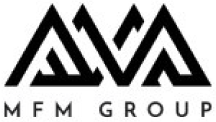The cost of running a business has jumped, as have the prices firms are charging, suggesting the inflation challenge still has some fight left in it.
A survey of businesses conducted by the National Australian Bank recorded a sharp uptick in both the costs for materials and workers, as well as the price tags firms were slapping on.
The July survey captured growing labour costs as new minimum and award wage decisions kicked in on July 1.
The 3.7 per cent quarterly lift in labour costs, up from 2.3 per cent in the month before, was also likely buoyed by the boosted super guarantee.
Purchase costs also grew a little faster in July compared to June, with high energy costs possibly to blame.
Growth in final prices re-accelerated, up by two per cent in July, the biggest monthly change in the history of the series and up from one per cent growth in June.
NAB chief economist Alan Oster said the results suggested some firms were immediately passing on their higher wage bills to their customers.
But a look under the hood revealed a more complicated relationship between labour costs and price-setting, with many firms reporting solid wage growth but still leaving their prices untouched.
“This reflects that most firms only update their prices periodically, with labour costs one of many considerations affecting price decisions alongside other input costs, demand and market dynamics.”
For the Reserve Bank, which has been battling high inflation with interest rate hikes, any sign of lingering price pressures will be unwelcome.
Official numbers have inflation falling from its peak, helping to fuel the case for a second month of interest rates on hold.
Commonwealth Bank economists Harry Ottley and Belinda Allen said further interest rate hikes were still unlikely, in their view, although signs of persistent cost and price pressures could throw out their forecasts for rate cuts.
By the time award and minimum wages show up in wage price index data in November, they expect the activity side of the economy to be weak enough to convince the Reserve Bank to stay on hold.
“However any signs of lingering price and wages strength could add to the risk of a later start to our current early rate cut call of March,” the economists wrote in a note.
Despite the outlook for costs, surveyed businesses were still in good shape and reporting above-average conditions.
“It’s saying the economy is actually performing well,” Mr Oster said.
But business confidence levels remained lacklustre and forward orders were weak, and were particularly gloomy in the retail sector.
“So it’s not as if it’s an economy that’s falling over, but it does say there’s a lot of stress in retail,” Mr Oster noted.
Consumers, however, remain deeply pessimistic.
Two separate surveys gauging consumer confidence levels revealed a muted response to the Reserve Bank’s decision to keep interest rates on hold in August.
Both the weekly consumer confidence report from ANZ and Roy Morgan and the monthly version from Westpac and Melbourne Institute hung back at weak levels, even with some positive developments for interest rates.
Poppy Johnston
(Australian Associated Press)





